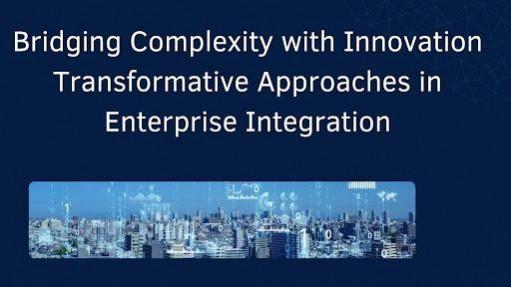
Modern enterprises face a labyrinth of challenges in system integration, driven by a mix of legacy systems, diverse cloud solutions, and an unyielding demand for real-time data. Deepak Bajaj, a thought leader in integration frameworks, delves into these complexities and explores innovative solutions in his latest work, showcasing how organizations can leverage advanced tools to simplify and optimize their operations.
The Heart of Modern Integration
Integration is essential in today's interconnected world. A systematic framework addresses key challenges like data synchronization, process automation, and security while fostering agility and scalability. By focusing on modular architectures, organizations can connect diverse systems seamlessly and adapt swiftly to evolving business needs, ensuring robust and efficient operations across complex ecosystems.
Simplifying Connectivity with Advanced Adapters
A cornerstone of modern integration frameworks lies in their ability to bridge diverse systems effortlessly. Pre-built adapters and connectors emerge as game changers, abstracting underlying complexities and enabling streamlined communication between applications. These tools support a broad spectrum of enterprise systems and cloud services, ensuring reliable and scalable integrations.
What makes these adapters particularly noteworthy is their intelligent design. With features like caching, connection pooling, and retry logic, they deliver consistent performance even under demanding conditions. Moreover, the ability to customize and extend these adapters allows businesses to tailor solutions to their unique needs while maintaining standardization.
Visual Development for Enhanced Usability
Intuitive visual design interfaces have transformed integration development by reducing complexity and promoting best practices. Features like drag-and-drop mapping, workflow definition, and error handling simplify processes without coding expertise. Real-time validation and version control enhance usability, minimizing errors and providing a structured approach to ensure stability and reliability in production environments.
Strengthening Security in Integration
Security in integration demands multi-layered measures to protect data and processes. Advanced frameworks offer role-based access controls, encryption protocols, and detailed audit logs. These measures ensure compliance, reduce data breach risks, and maintain system integrity. Predictive error detection and proactive notifications help address issues early, safeguarding operations and reinforcing robust security standards.
The Power of Process Automation
Automation has become synonymous with efficiency, and modern integration platforms are no exception. The ability to model, execute, and monitor business processes in a cohesive environment is a hallmark of advanced systems. By adhering to industry standards such as BPMN, these platforms enable organizations to design workflows that are both flexible and transparent.
Dynamic parallel processing, conditional branching, and integration with business rules engines are just a few of the features that make process automation a transformative tool. These capabilities allow enterprises to manage complex workflows with ease, ensuring optimal resource utilization and timely task completion.
Cloud-Native Advantages
The shift to cloud-native architectures has revolutionized enterprise operations, offering unparalleled benefits. Containerized and microservices-based approaches enable dynamic resource allocation, horizontal scaling, and robust performance even during peak demands. These features ensure high availability and operational reliability. Leveraging cloud-native principles allows organizations to achieve cost efficiency while meeting enterprise-grade performance standards. Modular designs facilitate seamless integration with emerging technologies, future-proofing infrastructure and empowering businesses to adapt quickly to evolving demands and opportunities in an interconnected digital landscape.
In conclusion, Deepak Bajaj's insights shed light on the potential of systematic frameworks to redefine how businesses approach connectivity and process automation. By embracing these advancements, organizations can position themselves for sustained success in an increasingly interconnected world.
As the integration landscape continues to evolve, the need for innovative solutions will only grow. His work not only demystifies the complexities of enterprise integration but also offers a roadmap for leveraging cutting-edge tools to drive operational excellence. As enterprises continue to navigate their integration journeys, his contributions serve as a beacon for innovation and efficiency.















